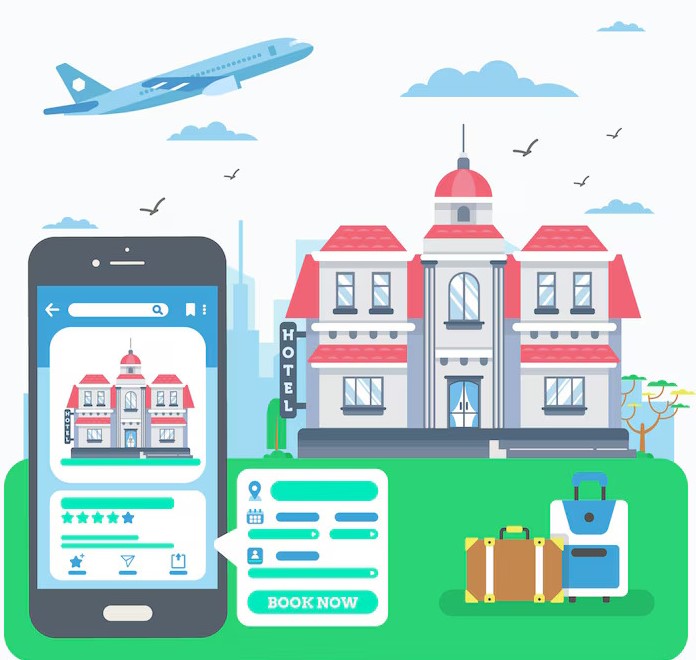Creating an app like Airbnb involves careful planning, smart technology choices, and clear execution. This article walks you through the essential steps and key features required to build a marketplace app that connects hosts and guests smoothly.
Why Build an App Like Airbnb?
The sharing economy continues to grow, and peer-to-peer rental platforms offer tremendous opportunities. A well-built app can attract users, generate revenue, and create a community. Building an app like Airbnb requires attention to both user needs and technical details.
Key Features of an Airbnb-Style App
Before jumping into development, list the must-have features for your airbnb clone app. These features form the foundation of your app’s success.
User Profiles
Both hosts and guests need profiles with personal information, photos, reviews, and ratings. This builds trust between parties and encourages transparency.
Property Listings
Hosts should easily add and manage listings. Include options for photos, descriptions, pricing, availability, and location details.
Search and Filters
Guests must find properties quickly. Implement search functionality with filters such as price, type of property, amenities, and dates.
Booking System
A booking engine that handles requests, approvals, and payments makes the process smooth. Guests should get instant confirmation when possible.
Payment Integration
Secure payment gateways like Stripe or PayPal handle transactions safely. Offer multiple payment options for convenience.
Reviews and Ratings
Allow users to leave feedback after stays. This helps maintain quality and builds confidence in the platform.
Notifications
Push notifications and emails keep users updated on booking status, messages, or special offers.
These Are Key Steps to Develop an App Like Airbnb
Creating an app like Airbnb involves more than just coding—it requires strategic planning, deep market understanding, thoughtful design, and the right technology. Whether you’re targeting vacation rentals, short-term stays, or niche lodging experiences, every stage in development plays a vital role in building a successful platform. Below is the first essential step in the development process:
Step 1: Research and Planning
Start by analyzing your target market. Identify your niche and competitors. Plan the unique value your app will offer. Sketch wireframes for the app screens and map out user journeys for hosts and guests.
Define the technology stack based on your budget and timeline. Popular choices include React Native for cross-platform mobile apps or native development using Swift (iOS) and Kotlin (Android).
Step 2: Design the User Interface
Design a clean, intuitive interface that users can navigate easily. Focus on simple layouts, clear calls to action, and easy access to essential features like search, booking, and profile management.
Use prototyping tools such as Figma or Adobe XD to create interactive mockups. Gather feedback early to avoid costly changes during development.
Step 3: Backend Development
The backend handles data management, user authentication, booking logic, and server-side processing.
Choose a Reliable Backend Framework
Frameworks like Node.js with Express or Django can handle complex operations efficiently. Cloud platforms like AWS or Google Cloud offer scalable infrastructure.
Set Up Databases
Store user profiles, listings, bookings, and reviews in databases. Use relational databases like PostgreSQL or NoSQL options like MongoDB depending on your data structure.
Implement APIs
Develop RESTful APIs to connect the backend with the app’s frontend. This will manage user actions such as creating listings, booking properties, and sending notifications.
Step 4: Frontend Development
Build the user-facing side of the app. Develop screens for sign-up, login, search, listing details, booking process, payment, and reviews.
Use frameworks like React Native to target both Android and iOS devices with a single codebase, or build separate native apps for better performance.
Step 5: Integrate Payment Systems
Payments form a crucial part of the app. Integrate trusted payment gateways to ensure safe transactions.
Implement features like:
- Payment authorization and capture
- Refunds and cancellations
- Currency support for international users
Add security layers such as SSL encryption and PCI compliance to protect user data.
Step 6: Test Thoroughly
Testing identifies issues before launching. Conduct:
- Functional testing for all features
- Usability testing to improve user experience
- Security testing to protect against vulnerabilities
- Performance testing to handle high traffic
Use both automated and manual testing approaches. Fix bugs promptly to maintain app stability.
Step 7: Launch and Market the App
Deploy your app to the Apple App Store and Google Play Store. Ensure all submission guidelines are met.
Create marketing campaigns that target hosts and guests. Use social media, influencer collaborations, and paid ads to attract users.
Step 8: Maintain and Update
Post-launch, monitor user feedback and app performance. Release regular updates to add new features, improve speed, and fix issues.
Stay responsive to user needs to build loyalty and grow your user base.
Tips for Success
- Focus on user trust by verifying hosts and guests
- Provide excellent customer support
- Analyze data to improve booking rates and user engagement
- Add localization features for different regions
Conclusion
Developing an app like Airbnb requires combining smart design, strong backend architecture, and seamless user experience. By following these steps and focusing on core features, you can create a marketplace app that attracts users and drives growth. Begin planning now and turn your idea into a powerful platform connecting travelers and hosts worldwide.


